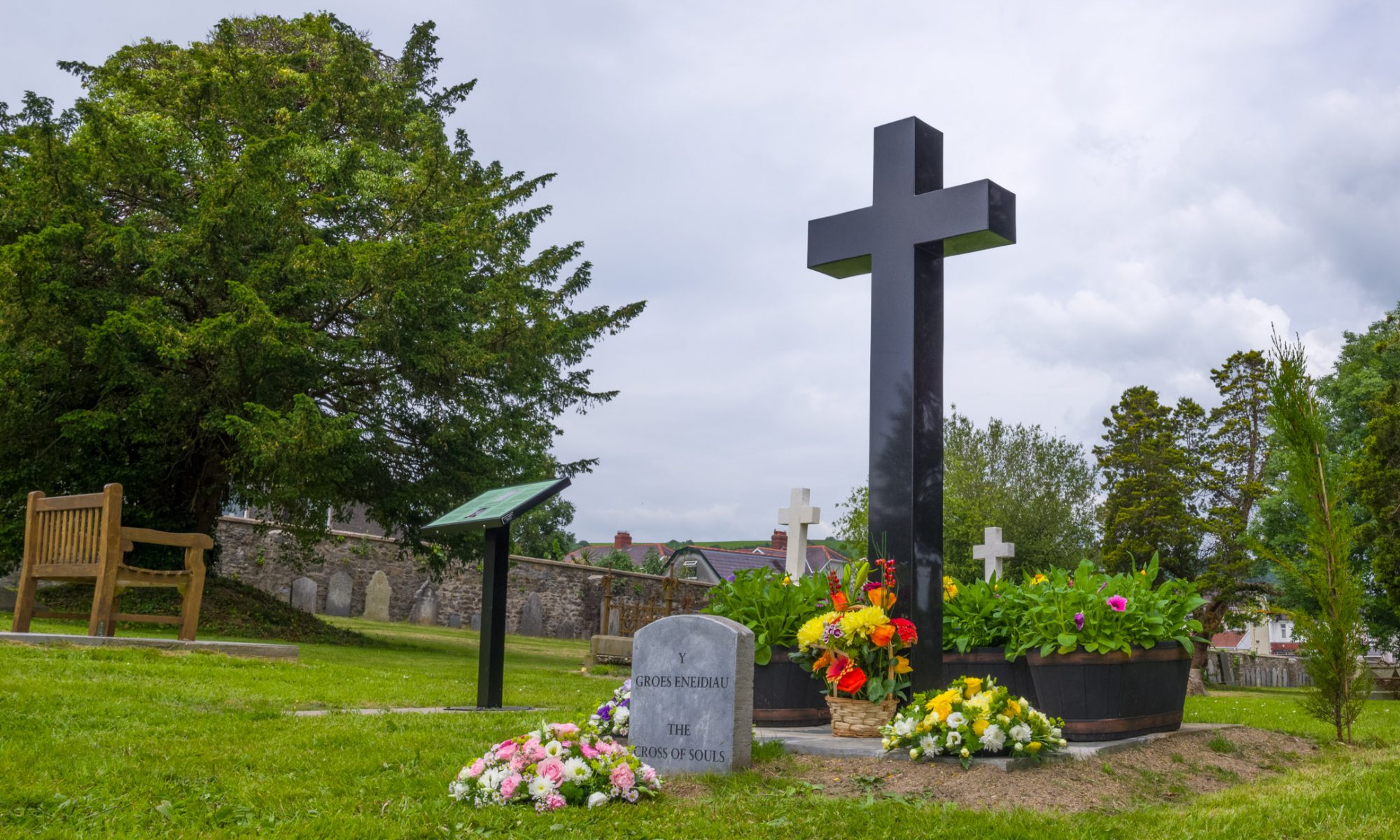This story is one that originally appeared in these columns previously, but at that time the details of the incident and name of the deceased was unknown, as was his fate. However, quite by chance, the detail of Thomas Jones’s unfortunate death can now be revealed after it was discovered quite by chance whilst carrying out further research. The original story therefore has now been replaced with this “updated” one. It is a very sad story like all suicides but nevertheless a story that forms an important part of the history of St Davids cemetery……
“Mr Jones – A respectable old man” & the moral outrage that followed his death in September 1848″
Suicide was a crime and regarded as the height of profanity in Victorian Britain. A newspaper report of September 1848 shows how the rougher element of Carmarthen took full advantage on the Church of England’s revenge on the suicide, and how the Carmarthen Journal reported the incident – It makes uncomfortable reading even after 172 years. It is an event however that actually took place and therefore an historically important link to St David’s Cemetery itself.
MORAL OUTRAGE
“One of the most disgusting scenes witnessed in this Town for a long time took place. We allude to the burial without Funeral Rites of the body of a respectable old man named Jones who committed suicide.
It having become known that the body was to be interred, a vast concourse of people amounting to several hundred, assembled to witness the sad sight, and when the coffin was brought out about nine o’clock, (at night) borne on the shoulders of four men, who galloped away with it almost at the top of their speed, the scene was truly disgraceful to a civilised and Christian nation, as the conduct of the populace, who occupied the time in coarse and indecent jesting, laughing and jeering and other more depraved acts far more befitted a heathen than a civilised nation.
The body, having been brought into the churchyard, was almost literally thrown into the grave and covered over with the greatest rapidity. If such scenes as these must be enacted, we think they may very easily be conducted in a more orderly manner and at a time when they are not likely to be attended by such truly demoralising accompaniments as characterised on Thursday night.”
The following inquest report was featured in the local newspapers prior to Thomas Jones’ burial giving details of his suicide.
A melancholy case of self-destruction occurred on Wednesday last in this town. In the evening of the same day an inquest was held on the body, at the Town hall, before John Hughes, Esq… Coroner, and a respectable jury, of which Mr. William Morgan was foreman. The deceased, Thomas Jones, was a carpenter, advanced in life, and much respected by those who knew him. The following depositions were made at the inquest: – Margaret Jones deposed,—“I am niece to deceased and lived with him. Soon after 9 o’clock deceased went to Jacksons Lane to put a room in one of his houses in order. About 11 o’clock I went to look for him, but could not find him, and returned home. I went again about 1 o’clock, and was informed by Mrs. George that deceased had been in her house, and had the keys of an adjoining house, now empty. Mrs. George accompanied me to the house, when I saw deceased with his feet on the ground, half lying. I perceived he had a cord round his neck, which was fastened to a hook in the ceiling he was dead and cold. He has been very unhappy this last twelve months about money matters. He had an impression that he should be ruined, and had threatened to do himself an injury in fact, I was always watching him. On Sunday week he was quite distracted, and struck his head against the wall several times. His memory has recently failed him. Was much as usual this morning, but he had been giddy for several years. John Morgan, a mason, stated that he was called to go to an unoccupied house in Jackson’s lane, and found decease suspended by a cord round his neck to a hook in the cellar his feet reached to the floor, and his head leaned forward. Witness cut him down, but he was dead and quite cold. He had conversed with him on that morning, and did not observe anything unusual in his manner” Mrs. George confirmed the witness’s evidence. The jury, after a consultation, returned a verdict of Felo de se.**
** Felo de se, Latin for “felon of him-or herself”, was a concept applied against the personal estates (assets) of adults who ended their own lives. Early English common law, among others, by this concept considered suicide a crime – a person found guilty of it, though dead, would ordinarily see penalties including forfeiture of property to the monarch and a shameful burial. Beginning in the seventeenth century precedent and coroners’ custom gradually deemed suicide temporary insanity – court-pronounced conviction and penalty to heirs were gradually phased out. Such judgment and penalties had taken in any deceased, lawfully killed for self defence or defence of another, committing a felony.
